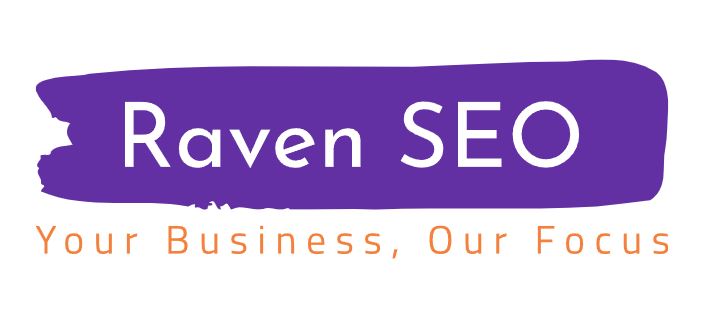In the dynamic world of organic search, simply existing online isn’t enough. Standing out and capturing your ideal audience means being the definitive best answer to a user’s question. As your Baltimore SEO expert, with nearly a decade in the trenches of digital marketing, I can tell you that true success lies in mastering the foundational aspects that underpin your digital presence, especially as search continues its rapid evolution with AI.
While countless factors contribute to a website’s overall success, these six core components represent your highest priority for fine-tuning your site, ensuring not just visibility but sustainable, high-value organic growth.
Introduction: Building a Future-Proof Online Foundation
Navigating the increasingly complex landscape of organic search demands a strategic, holistic approach. The foundation of this strategy lies in meticulously optimizing these key areas. From ensuring flawless core web vitals to cultivating genuine content authority, we’ll explore the critical elements – and practical ways to address them – that will not only propel your website to the forefront of search engine results but also prepare it for how users and sophisticated algorithms (including AI Overviews) are now consuming and interpreting information.
1. Robust Site Architecture: Your Website’s Blueprint for Discovery & User Journey
Your site’s architecture is its fundamental skeleton – absolutely crucial for both seamless user experience and how search engines like Google efficiently crawl, understand, and index your content. A meticulously planned, intuitive structure helps Google’s bots navigate your site with ease, grasping your topical authority and ensuring all your important pages are found. Conversely, a confusing, disorganized site will struggle to demonstrate relevance and value.
Key considerations for optimal website architecture:
- Logical, Intuitive Navigation: Design clear, concise menus, internal links, and breadcrumbs that guide users (and Googlebot) effortlessly through related topics. Think about the user’s natural journey.
- Clean, Semantic URL Structures: Use short, descriptive, and keyword-rich URLs (e.g., yourdomain.com/service/baltimore-seo-audit) that provide immediate context about the page’s content.
- Strategic Internal Linking: Beyond primary navigation, proactively link related pages within your content. This vital practice passes “link equity” throughout your site, highlights crucial pages, and guides both users and crawlers deeper into your offerings. Consider a “hub-and-spoke” model, where a main topic page links out to more detailed sub-topics.
- Optimized XML Sitemap: This “roadmap” explicitly tells Google which pages are important to crawl and index, particularly vital for larger sites or those with dynamic content. Ensure it’s always up-to-date and submitted via Google Search Console.
2. Mobile Optimization & Core Web Vitals: Speed and Smoothness on Any Device
In 2025, mobile is no longer just “important” – it’s paramount. Google’s mobile-first indexing means your site’s mobile version is the primary one used for ranking. But it’s not simply about fitting on a small screen; it’s about delivering an excellent experience. Google explicitly measures this via Core Web Vitals (CWV).
Important points for superior mobile optimization and CWV performance:
- Responsive Design as a Standard: Your website must automatically adapt and display perfectly on any screen size, from a large desktop monitor to the smallest smartphone.
- Core Web Vitals (CWV): These are Google’s measurable signals of user experience that directly impact rankings:
- Largest Contentful Paint (LCP): Measures how quickly the main content on your page loads and becomes visible.
- Cumulative Layout Shift (CLS): Quantifies how much your page’s layout shifts during loading, preventing annoying content jumps.
- Interaction to Next Paint (INP): The newest CWV, measuring how quickly your page responds to a user’s first interaction (like a tap or click). Aim for instant feedback.
- Mobile-Friendly Content: Ensure text is readable without zooming, buttons are easily tappable, and forms are simple to complete on a small screen.
- Proactive Testing: Regularly use tools like Google’s Mobile-Friendly Test and PageSpeed Insights to diagnose and optimize your website’s mobile performance and CWV scores.
3. Page Speed Performance: Capturing Attention and Conversions
In today’s ultra-fast digital environment, users expect instant information. If your website takes even a few seconds too long to load, visitors will simply hit the back button – a lost opportunity and a negative signal to Google. Slow speed directly impacts your Core Web Vitals, user engagement, and ultimately, your rankings and conversions. Optimizing page speed is essential for maintaining traffic flow and customer satisfaction.
Actionable strategies to boost your page speed performance:
- Aggressive Image Optimization: Compress images without sacrificing quality, and use modern formats like WebP or AVIF. Implement lazy loading so images only load as they scroll into view.
- Efficient Browser Caching: Configure your server to allow browsers to store static elements of your site, making repeat visits significantly faster for users.
- Optimized Server Response Time: Work closely with your hosting provider to ensure your server delivers content quickly. Choosing a high-performance hosting solution is paramount (refer back to our discussions on hosting types!).
- Minify Code & Eliminate Render-Blocking Resources: Reduce unnecessary CSS, JavaScript, and HTML code, and ensure critical resources load first to improve perceived speed.
4. Structured Data Markup: Speaking Google’s Language for Rich Results & AI Comprehension
Structured data is no longer optional; it’s increasingly vital. As Google expands its “enhancements” in search results (like rich snippets) and as AI systems rely on structured understanding, implementing Schema Markup provides explicit context to search engines about your content. It helps Google disambiguate information and display it accurately.
Harnessing Structured Data Markup for maximum impact:
- Demystify Structured Data: It’s a specific code vocabulary that helps Google understand elements like your business’s address, phone number, product prices, customer reviews, event details, or even the steps in a recipe.
- Rich Snippets & Enhanced Visibility: Properly implemented Schema Markup can enable your content to appear with “rich snippets” (e.g., star ratings, images, specific details) directly in search results, dramatically improving visibility and click-through rates.
- AI Readiness: Critically, well-implemented structured data makes it significantly easier for AI models (like those powering Google’s AI Overviews) to accurately extract, summarize, and present specific information from your site, increasing your chances of being featured.
- Schema Types: Focus on types most relevant to local businesses like LocalBusiness, Product, Service, FAQPage, and Review.
5. High-Quality Content & E-E-A-T: Your Authority, Relevance, and Trust
Even the most technically perfect site won’t rank without truly exceptional content. This is arguably the most crucial component for sustained organic growth, especially in an AI-driven search world where depth, originality, and trustworthiness are paramount. Your content must be genuinely helpful, unique, and demonstrably rooted in E-E-A-T: Experience, Expertise, Authoritativeness, and Trustworthiness.
Crafting impactful, E-E-A-T-rich content:
- Deep Keyword Research & User Intent: Always begin by rigorously understanding what your audience is searching for, why they’re searching (their specific “intent” – informational, transactional, navigational), and how they phrase their queries. This understanding is the bedrock of content strategy.
- Provide Unmatched Value: Don’t just write for keywords; solve problems, answer questions comprehensively, and offer unique insights. Go beyond surface-level information.
- Demonstrate E-E-A-T: Learn more about The Power of E-E-A-T: Crafting High-Quality Content for SEO and Audience Trust on our blog.
- Experience: Show you’ve personally done it (case studies, photos of work).
- Expertise: Present deep knowledge, research, and data.
- Authoritativeness: Get recognized by others in your field, earn backlinks.
- Trustworthiness: Be transparent, accurate, provide clear contact information, have strong privacy policies/customer reviews.
- Regular Updates & Content Freshness: Consistently add new, relevant content. A blog is an excellent way to demonstrate ongoing activity and provide fresh value to both users and search engines.
6. Comprehensive Technical SEO Audit: The Ongoing Health Check & Problem Solver
While much attention goes to content and keywords, even minor technical glitches can silently sabotage your rankings. As always, a clean website that looks professional and navigates well without issues should be your baseline. However, technical issues can subtly creep in over time. Running regular Technical SEO Audits is one of the first and most fundamental steps to improve and maintain your digital presence.
Quick points for a thorough website technical audit:
- Identify & Resolve Crawl Errors: Ensure Google’s bots can efficiently access and index all your important pages. Regularly check your
robots.txtfile and your “Crawl Stats” and “Index Coverage” reports in Google Search Console. - Manage Duplicate Content: Use canonical tags effectively to tell Google the preferred (original) version of a page, preventing confusion and ensuring link equity isn’t diluted across identical content.
- Fix Broken Links & Redirect 404 Pages: Eliminate frustrating dead ends for users and search engines. Implement 301 redirects for any deleted or moved pages to preserve SEO value.
- Optimize XML Sitemaps: Ensure your sitemaps are accurate, comprehensive, and correctly submitted to Google Search Console to guide indexing.
- Security (HTTPS): Verify your site uses HTTPS encryption, which is a ranking factor and essential for user trust and data security.
Mastering organic search today involves a holistic and proactive understanding of these technical intricacies, coupled with the paramount importance of high-quality, E-E-A-T-driven content. By diligently addressing these six key focus items, you pave the way for a website that not only meets but exceeds the expectations of both users and sophisticated search engine algorithms (and the AI systems they leverage), providing a seamless, high-value experience for all.
Ready to elevate your website’s organic search performance? Contact Raven SEO to receive your complimentary website analysis, and begin truly boosting your online presence. For specific help reaching customers right here in Baltimore, explore our Local SEO services. Stay tuned for more insights into the dynamic world of digital optimization.




